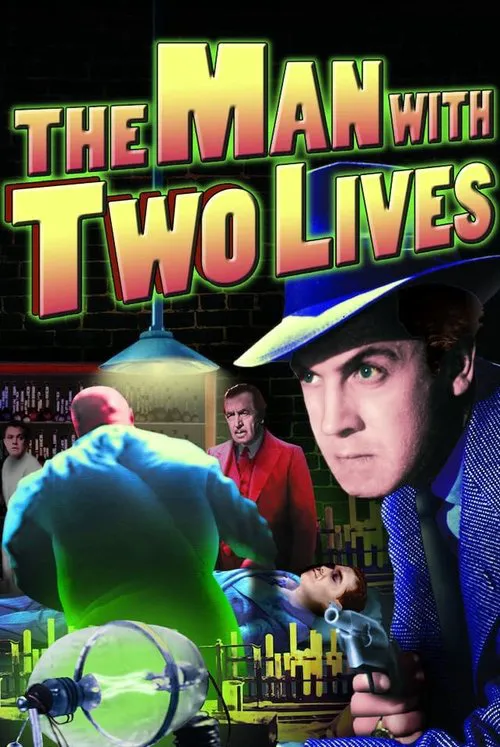Man With Two Lives

Plot
In the 1946 film "Man with Two Lives," a dark and supernatural tale of possession and vengeance unfolds. The narrative centers around Dr. Bernard Allan, a renowned scientist who has developed a means of preserving life by transferring a person's consciousness into the dead body of another individual. The concept is still in its experimental stages, but it holds immense potential for changing the course of medical science. The story begins with Allan's latest experiment, which involves a desperate attempt to revive his dying wife, Helen. However, the experiment fails, and Helen succumbs to her illness. Just as Allan is grieving the loss of his wife, James Dawson, a notorious gangster, is being led to the electric chair for a string of robberies and murders. The parallel between the two men's lives becomes evident as both their fates seem to be inextricably linked. During the execution, a freak electrical surge causes the body of Dr. Allan to receive Dawson's consciousness, effectively transferring the soul of the condemned man into the scientist. The film's central premise is thus set, with Allan now harboring Dawson's malevolent spirit. Dawson, once a free spirit, is now confined to a new body with a life he can no longer control. At first, Allan's behavior seems unaltered, but it soon becomes apparent that something is amiss. His actions become erratic, and he begins to exhibit a deep-seated hatred towards the people he once considered friends. It becomes clear that Dawson's presence is exerting a profound influence over Allan's mind and body. The boundaries between the two entities start to blur, and the scientist finds himself trapped in a living nightmare. As Dawson's influence grows, Allan's personality begins to unravel. He starts to relive the darkest moments of Dawson's life, including his time as a gangster. This internal conflict drives Allan to question his identity and sense of purpose. In a desperate attempt to understand and regain control of his own life, he turns to his friend, Dr. Robert Elliot, for help. Meanwhile, a series of bank robberies takes place across the city, with the police baffled by the seemingly impossible fact that Allan's appearance was seen at each crime scene. As the investigation unfolds, Dawson's malevolent presence becomes more pronounced, and Allan's actions become increasingly erratic. The tension builds as Allan struggles to reconcile his own sense of self with the dark entity that has taken hold of him. In a climactic showdown, Allan's dual identity is forced to confront the reality of his situation. With the help of Dr. Elliot and the love of his life, Helen, Allan must find a way to expel Dawson's spirit and reclaim his own life. However, as the electric chair's fate has already been sealed with Dawson, it creates a dramatic conclusion. The film's ending poses a poignant and thought-provoking question: Can a person's soul be separated from their own body, or is it an indivisible entity? The answer remains ambiguous, leaving the audience to ponder the nature of identity and the afterlife. As the credits roll, the narrative raises as many questions as it answers, inviting viewers to reflect on the enigmatic world that exists beyond the boundaries of our reality. "Man with Two Lives" is a film that stands the test of time, with its eerie atmosphere and haunting narrative continuing to intrigue audiences to this day. By exploring the complexities of life, death, and identity, the movie offers a thought-provoking commentary on the human condition. The 1946 production is a classic example of film noir's darker themes and is sure to captivate viewers who enjoy the macabre and supernatural.
Reviews
Recommendations



